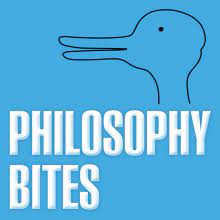
In this episode of Ted Talks Daily, Karen Bakker explores the fascinating world of bioacoustics and the potential for interspecies communication. Through the use of AI and machine learning, scientists are decoding the language of nature and gaining a deeper understanding of other creatures. From bats and orcas to honeybees and coral larvae, this episode delves into the intricate ways in which animals communicate through sound.
Through the use of AI and machine learning, scientists are decoding the language of nature and gaining a deeper understanding of other creatures. Bats and orcas have distinct dialects that are passed down from one generation to the next. By studying their vocalizations, researchers can decipher the meaning behind their communication. Even creatures without ears, like baby Amazonian turtles, communicate through sound vibrations. This research opens up new possibilities for understanding animal behavior and fostering interspecies connections.
Coral larvae have the ability to hear and navigate back to their home reef using their entire body as an “inside-out ear”. This unique adaptation allows them to find their way back to their birthplace, contributing to the regeneration of coral reefs. Honeybees, on the other hand, communicate through a complex system of acoustic, positional, spatial, and vibrational signals. Scientists are even encoding honeybee signals into robots to monitor the health of the planet. By studying these intricate communication systems, we can gain insights into the interconnectedness of all living beings.
Bioacoustics has proven to be a valuable tool for conservation efforts. By analyzing the sounds of marine species like whales, researchers can protect them from collisions with ships through real-time guidance. Bioacoustics also plays a crucial role in regenerating coral reefs and safeguarding endangered species. Understanding the communication patterns and needs of different species allows us to take proactive measures to ensure their survival. Furthermore, bioacoustics combined with machine intelligence opens up new frontiers in exploring the intelligence of non-human species, challenging our perception of what it means to be intelligent.
The world of bioacoustics offers a glimpse into the intricate language of nature and the potential for interspecies communication. By using AI and machine learning, scientists are unraveling the mysteries of animal communication and finding ways to protect and preserve our planet’s diverse species. As we delve deeper into the world of bioacoustics, we must also establish strong ethical guidelines to ensure the responsible use of this knowledge. By amplifying the voices of non-human species, we can foster a deeper understanding of our interconnectedness and work towards a more harmonious coexistence.